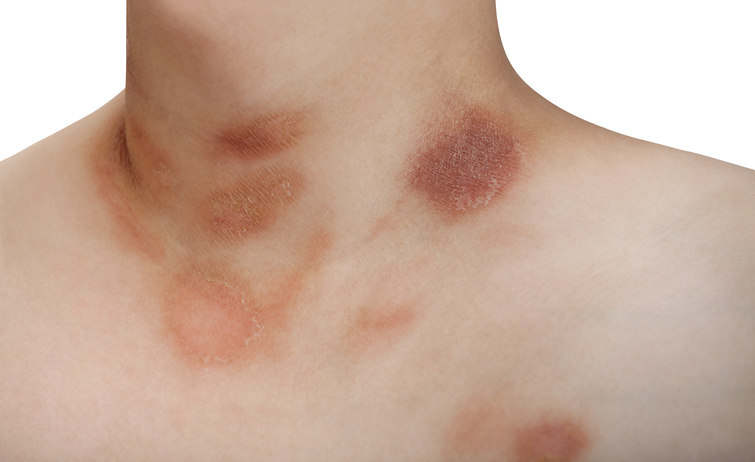Pityriasis rosea was reported more frequently after vaccination than during or after acute infection.
Past studies have suggested that both HHV-6 and HHV-7 may be causes of the skin disease pityriasis rosea (PR). (Drago 2021; Drago 2015) Furthermore, there have been multiple reports of PR occurring after COVID-19 or after vaccination for COVID-19, raising the question of whether COVID-19 reactivated latent HHV-6/7 infection which, in turn, triggered PR.
A recent systematic review pooled data reported in 34 studies involving 154 patients. The interesting clinical data included the following observations:
- PR occurred more often after vaccination (66% of the 154 cases reported) than during (14%) or after resolution of acute infection (20%), although the vaccination status of those developing PR following natural infection was not systematically reported;
- Only 7% of patients with PR were tested for concomitant HHV-6/7 infection, making the possible role of these viruses in causing PR impossible to assess;
- PR occurred after both the first and second doses of the vaccine, but not following subsequent doses/boosters;
- PR appeared an average of 10 days after receiving the vaccine;
- PR cases were both classical (initial “herald patch” on the trunk followed by characteristic scattered rash involving multiple areas of the trunk and upper arms) and atypical (no herald patch, sometimes large, confluent lesions);
- Nearly all patients reported resolution of the rash, either spontaneously or following (unspecified) treatment.
This systematic review could not assess the incidence of PR following either COVID-19 or vaccination for COVID-19. The cases reported in these studies may well represent just a small fraction of all actual cases of PR following COVID-19 or vaccination for COVID-19: the numerator may be artifactually small. However, the cases occurred in a world where billions of people have been infected with or vaccinated for SARS-CoV-2 infection: the denominator was very large. Thus, PR following infection or vaccination must be rare. And because so few patients had any testing done for either HHV-6 or HHV-7, this review cannot shed light on the possible role of these viruses in causing PR.
Read the full article: Wong 2023

